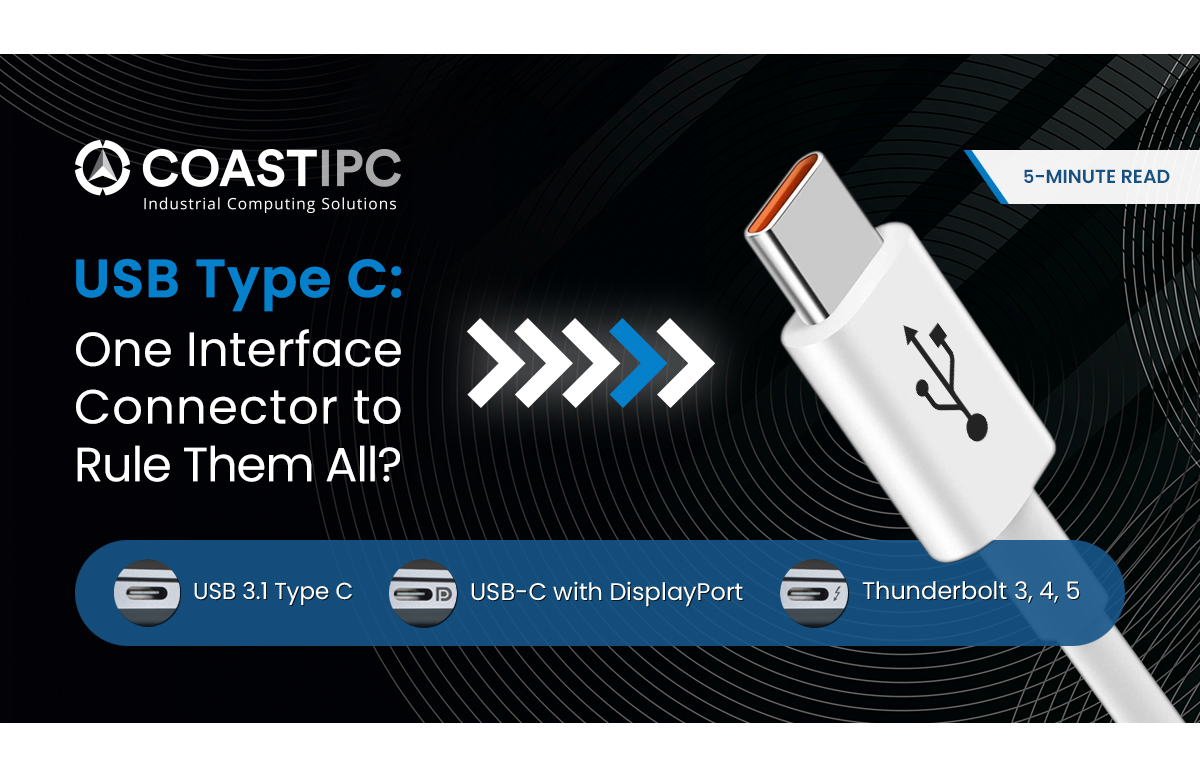
Peripheral and device connectivity to host computing systems has long been fraught with challenges: connector differences, lack of support for some interface types, not enough ports of another type — the list goes on. In the consumer space, this has created a need to carry a collection of different cables for different devices, only to often not have the one you need when you need it.
In industrial applications, the challenges are much more significant. Many industrial devices use interfaces not found in the consumer market, necessitating the use of specialized connectors, cabling, acquisition boards, and modules that are typically not found in off-the-shelf workstation, industrial, or single-board computers. Add to that the complexity that comes with supporting different hardware protocols in host software, and applications suddenly require more effort to develop, maintain, validate, and verify. These complexities also place increased constraints on computer selection options, as requirements for expansion slots to support specialized data acquisition hardware add size and cost to vision and automation systems.
USB-C’s most recent evolutions provide the basis for a simplified connectivity experience while building on performance enhancements that enable it to compete in many of the most demanding applications where data transfer, power delivery, and video display are major considerations.
Data Transfer Rates
The Type C connector was introduced with USB 3.1 and is backward compatible to support devices from previous generations. Naming conventions for USB 3.x haven’t always been straightforward, however, so maximum throughputs for a given configuration aren’t always clear. Additionally, cables offer different maximum throughputs, further complicating things. What you can be certain of is that any USB 3.x device will have a maximum transfer speed of at least 5 Gbps and up to 20 Gbps. It is important to note that Type C itself is a connector and could be supporting a variety of transfer protocols, from USB 2 to USB 3 or even Thunderbolt/USB 4.
The USB-C connector is capable of sustaining even higher transfer rates than those supported by the USB standard today. For example, Thunderbolt offers maximum transfer rates of 40 Gbps over USB-C and supports backward compatibility with USB, meaning that USB-C devices can be connected to Thunderbolt ports on a host PC, bringing even greater value and benefit to users.
Power Delivery
USB-C Power Delivery (PD) is quickly becoming the standard for supplying power to and for fast-charging devices. All USB-C cables are rated for at least 60 W (20 V @ 3 A), and high-power cables with support for up to 100 W (20 V @5 A) are also available. USB-C PD ups the ante on power even further, bringing delivery to 240 W (48 V @ 5 A), sufficient for powering many peripheral devices and embedded, industrial, and edge PCs. Like many of the other features of USB-C, device and cable selection is key to unlocking these benefits.
DisplayPort
Additional flexibility with USB-C includes its ability to support non-USB communication and transmission standards. This is referred to as Alt Mode capability. One of these supported interfaces is DisplayPort (USB-C DisplayPort or DP Alt Mode). This allows the connection of video sources (e.g., Blu-ray players) to display devices (e.g. projectors) using USB-C. It is important to note that because manufacturers have the ability to choose the level of feature support in their product designs, not all USB-C ports are DisplayPort compatible.
Feature-Rich Future
USB-C may offer the best chance to simplify our interface options through consolidation of device interfaces. The rotationally symmetrical connector provides the ultimate in intuitiveness by eliminating the possibility of incorrect or backward insertion without exposing conductors to contamination or damage. It provides support for significant data transfer rates and power delivery exceeding the needs of most devices. The Type-C connector also affords multi-protocol support with USB, Thunderbolt, DisplayPort, Power Delivery, and others, all provided over the same connector, simplifying cabling solutions and eliminating confusion along the way. These benefits, alongside legislative requirements that USB-C become the standard connector for battery charging in some major geographical regions, are resulting in increased adoption among device and PC vendors alike.
The big caveats with USB-C are that not all ports are created equal and that feature support can vary from one device to another based on manufacturer choices. To navigate the complexities of component selection, consider relying on an industry expert such as CoastIPC. It offers a wide range of industrial computing and connectivity solutions from major manufacturers such as Neousys and Advantech and can also provide custom and value-add solutions and services tailored to your exact needs. The professionals at CoastIPC can work with you to understand your application and propose solutions that meet your unique needs, requirements, and budget.
For more information about interface and connectivity options and the best fit for your industrial computer application, please contact our product experts at [email protected] or 866-412-6278.
